Hitting the Books
A little while ago, my lovely librarian wife told me about LibraryThing, a nifty site where you can easily catalog books by entering titles or ISBN numbers. It sounded like just the thing to help me keep track of my video game book collection -- and even better, it gave me an excuse to comb through my book stacks yet again, which I love doing. After the games themselves, vintage books are my favorite video game items to collect. Make no mistake, if you’re interested in learning about video game history, your best bets are recent publications like Leonard Herman’s Phoenix or Ralph Baer’s In The Beginning. These titles have the benefit of hindsight after all, and they’re a good bit more scholarly than, say, The Video Master’s Guide to Pac-Man or anything that Jeff Rovin ever wrote. But if you want to take a trip back in time, to see how people felt about the classics back when they were current -- vintage books are the only way.
When I finished entering my collection into LibraryThing, it informed me that I had 92 books that cover video games in some way. Eighty-four were published before the year 2000, and 43 before 1990, which means I have plenty of vintage reading material. After reading most of them, I’ve learned to divide them into three categories: the “How to Beat” variety, the informational variety, and everything else.
"How To Beat" Books
Books of the “How to Beat” variety comprise approximately 99 percent of the vintage video library, so be prepared to have a few in your collection. These types of books contain gameplay strategies. They generally cover arcade games. And, they generally cover the exact same group of roughly 15 popular early-‘80s coin-ops. Some of the best titles in this genre are Tom Hirschfeld’s easily found How to Master the Video Games and The Complete Video Warrior by Major Mayhem (seriously). For home games, Be a Home Videogame Superstar: Secrets to the Best Games for Your Atari VCS and the exhaustive Complete Guide to Conquering Video Games should not be missed. The latter is by Jeff Rovin, and even though I gave him a hard time in the last paragraph, the dude does know his video game strategy.
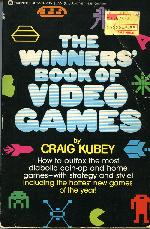 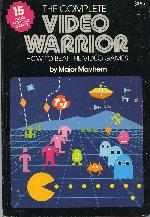 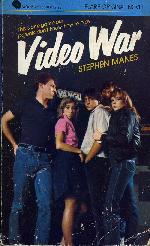
Really, most “How to Beat” books offer solid tips and tactics, but you probably know them all by now, which limits their usefulness a bit. Twenty-five-plus years later, the best “how to beat” books are those that serve up something more, be it coin-op trivia or early-‘80s goofiness. One such book is The Winners’ Book of Video Games by Craig Kubey. Kubey’s slightly snide tone sometimes gets in the way of his text, but it’s worth reading because Kubey actually did research before writing it. He obtained some of his info directly from game programmers, and I’ve found some fascinating tidbits in this book that I had never heard anywhere else. Did you know that Berzerk programmer Alan McNeil made his robots so accident-prone because he had a love-hate relationship with computers and wanted to “humanize” them? Did you know that some players used to call the large and small UFOs in Asteroids Wally and the Beaver? There’s a ton of stuff like that in here.
Len Albin’s Secrets of the Video Game Superstars (1982) opens with an interesting introduction that brings together opinions about video games from a variety of sources, including a Battlezone junkie, an Entex handheld designer, and a psychologist. The Player’s Strategy Guide to Atari VCS Home Video Games, from the editors of Electronic Games magazine, closes with an intriguing preview of what was coming up for the VCS in late 1982. I’m still waiting for Adventure II.
Informational Books
Video games were such a huge and recent phenomenon in the early 1980s that a surprising number of books were written about it. Many of these are juvenile, aimed at the kids who were likely to be the most interested in the subject. You’re not likely to learn much from these books today, but they’re interesting artifacts nonetheless. Electronic Games by Fred D’Ignazio, a grade-school library book that shows Atari 2600 Space Invaders on its cover, is a choice example. Daniel Cohen’s Video Games contains a number of fantastic, albeit black-and-white, photographs of ‘80s game players. In the Star Wars Question and Answer Book About Computers, R2D2 and C-3PO indoctrinate trusting children into the electronic age.
Defending the Galaxy: The Complete Handbook of VideoGaming, edited by Michael Rubin, aims for a slightly older audience but misses. This is the most juvenile, pure 1980’s-adolescent-level book in my collection. It’s pure gold. It’s less about games than about the “culture” surrounding them, but it’s so stuck in that silly culture that it’s almost transcendently pathetic. This book dedicates entire chapters to things like what shoes to wear while gaming, or the correct etiquette to use while “jamming in” (getting the next play on an occupied coin-op). No book will take you back in time as effectively as this one. I can’t recommend it highly enough.
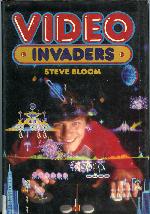 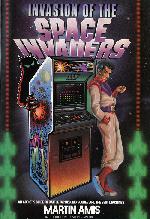 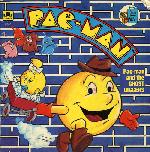
A few vintage books adopt an informational tone and do it well. Steve Bloom’s Video Invaders is probably the best example in my collection. This is the one of the few books from that era, for example, to give Ralph Baer proper credit. Bloom’s book actually examines the industry and the people behind it instead of focusing solely on the games, making it a must-read. Martin Amis’s Invasion of the Space Invaders is an excellent look at ‘80s gaming culture from the inside. Scott Cohen’s Zap! The Rise and Fall of Atari is fairly well-known, and is worth a read, although works from recent years are much better.
A note on Invasion of the Space Invaders: it’s a darn good book, but you’ll probably never read it. It was published in the UK, and Martin Amis went on to become an acclaimed author of British fiction. His early works have therefore become valuable collectibles. Invasion of the Space Invaders goes for several hundred dollars these days, and I had to resort to interlibrary loan to read it (hey, there are many advantages to being married to a librarian!).
Everything Else
These books are the other stuff, the flotsam left in the wake of any pop-culture phenomenon. Joke books, parenting guides, juvenile fiction... a lot of words were written about video games a quarter-century ago. The Adventures of Q*bert is a kid’s storybook about our qube-hopping friend. Blips! The First Book of Video Game Funnies is a book of illustrated video game groaners by Bob Stine, the guy who went on to write the ubiquitous Goosebumps kid’s scare-book series. What to Do When Your Mom or Dad Says… Don’t Overdo with Video Games!” is a kiddie self-help book, sort of a twelve-step guide for the pre-teen videoholic.
Video War by Stephen Manes deserves special mention. It’s an adolescent-level work about a group of kids who oppose a law banning video games in their community. Although the story’s not particularly captivating for the adult reader, it does do a fair job of capturing ‘80s teen sensibilities. Plus, it’s notable for having an entire chapter that demonstrates what it would sound like if an early-‘80s video game had sex (INSERT HERE… OHH! MMM! NEXT WAVE). How kinky. But for pure weirdness, it’s hard to beat Pilgrim in the Microworld by David Sudnow, where the sociologist author spends 227 pages intellectualizing his obsession with Atari 2600 Breakout. I guess they were right; video games do rot your brain!
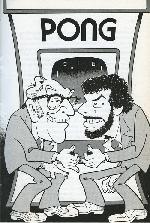 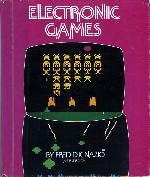 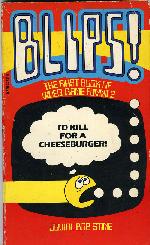
I’m really only scratching the surface of what’s available in vintage video game books. I didn’t mention the “book and record” sets featuring Pac-Man, or the reference guides like The Complete Guide to Electronic Games, which focuses on handhelds. Then there’s the whole “introduction to computers” subgenre, which focuses on PCs but invariably devotes a chapter or two to games. For a more complete guide, check out The Classic Video Games Literature List, an online treasure trove that’s often overlooked.
Vintage books are among the best ways to relive that totally awesome and radical time when Pac-Man patterns were hottest new invention, when scoring 100K in Defender made you a source of awe and inspiration, when people were actually interested in strategies for scoring high at Carnival. Keep an eye out while hunting for games -- the books still turn up sometimes and they’re usually cheap when they do. Happy reading!
|










